
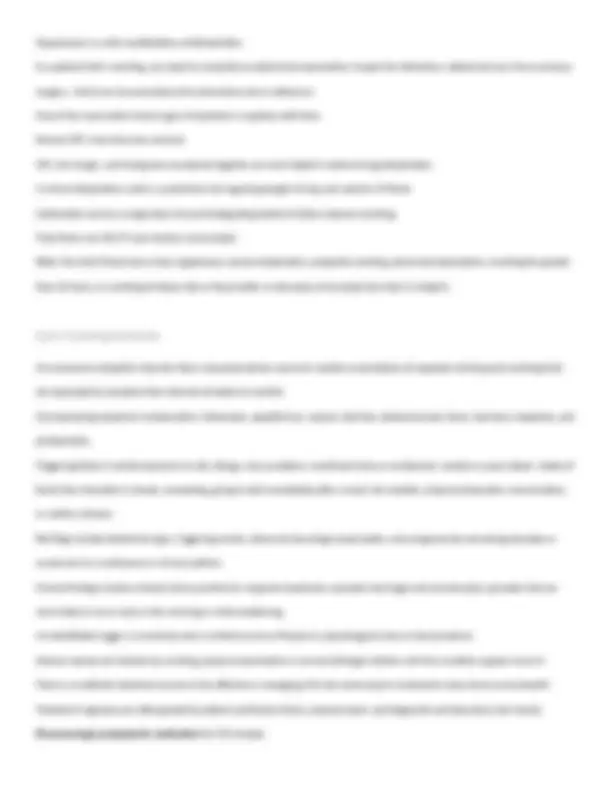
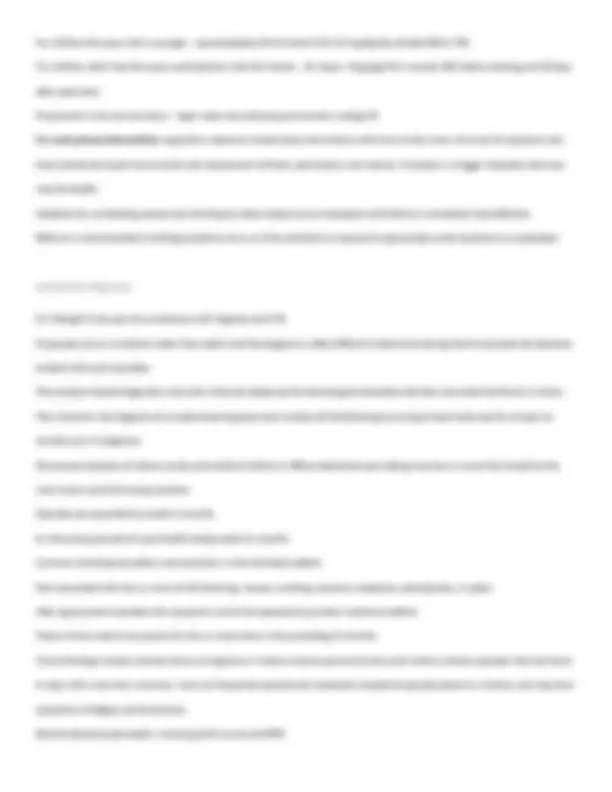
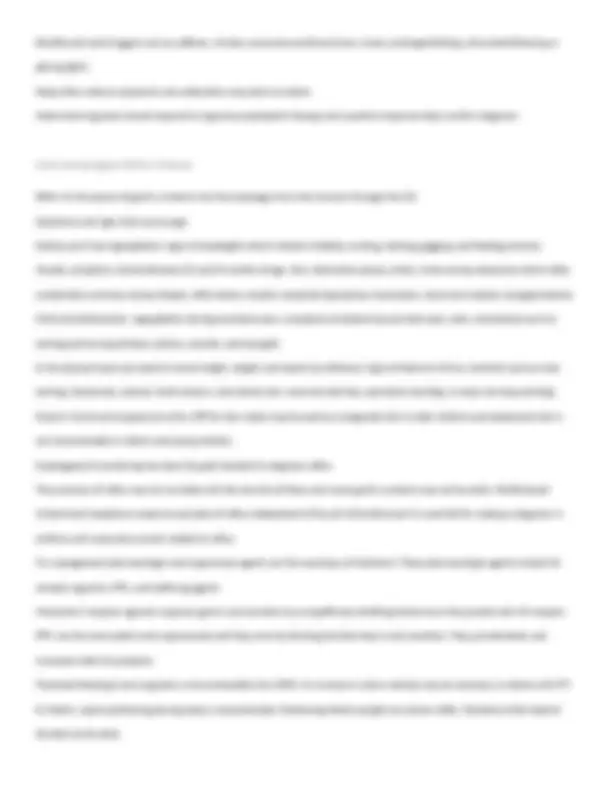
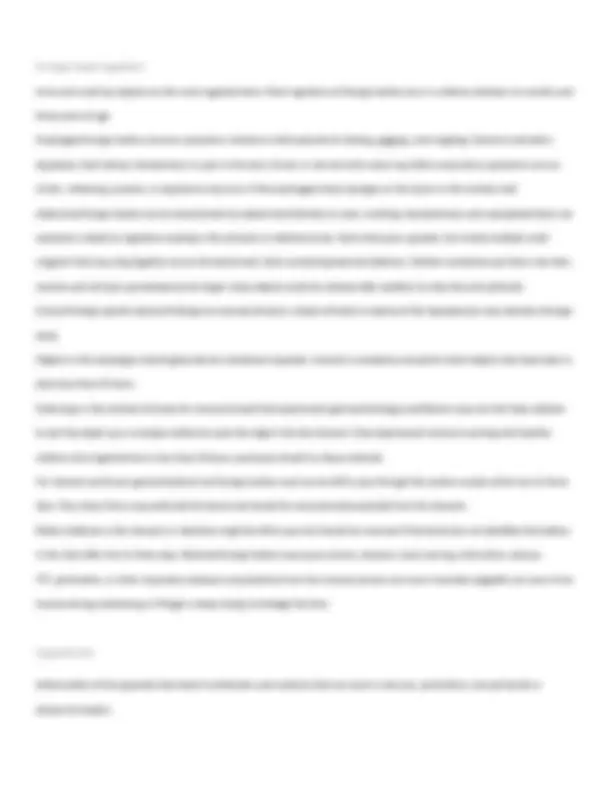
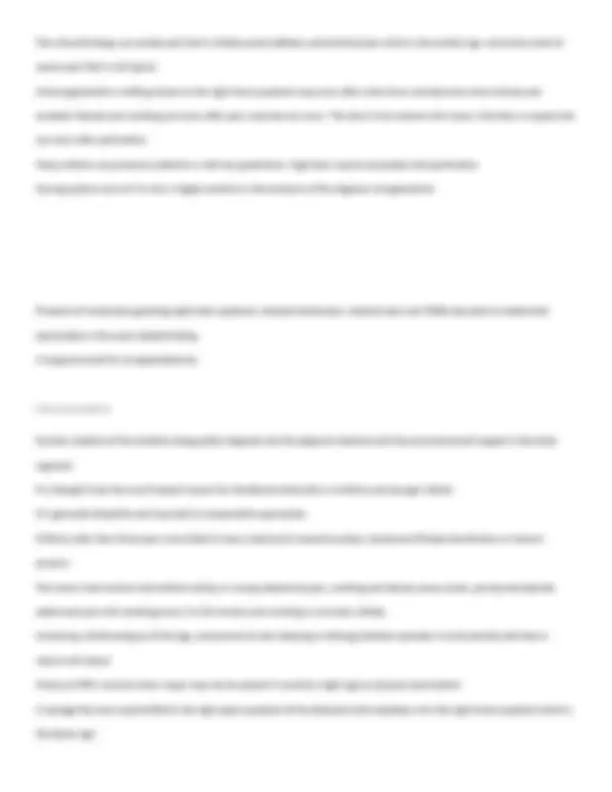
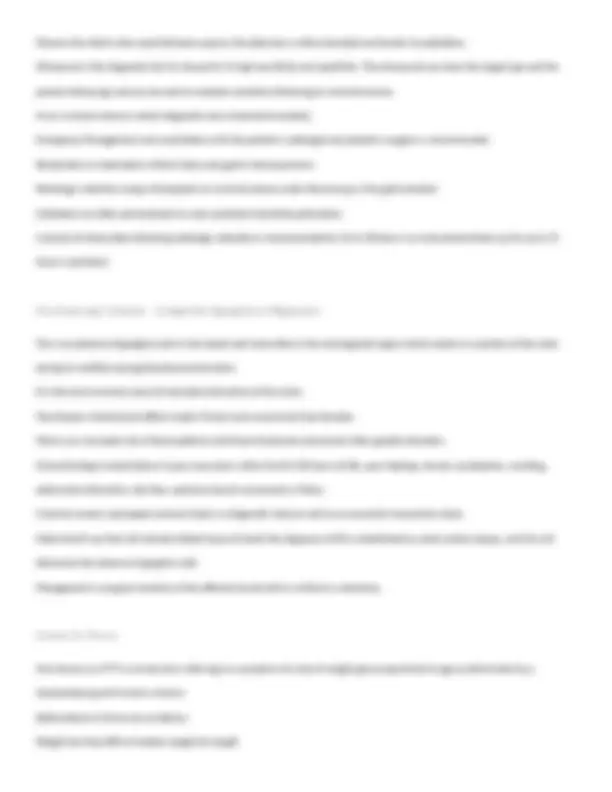
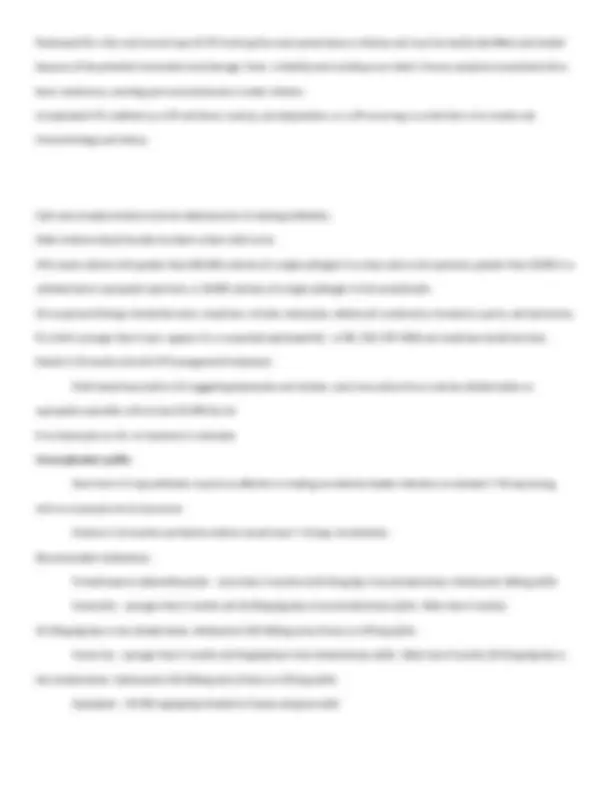
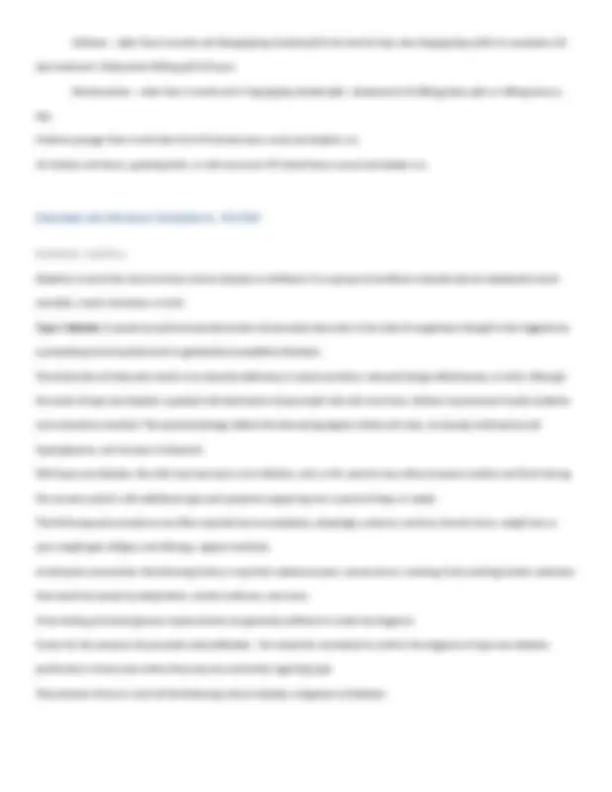
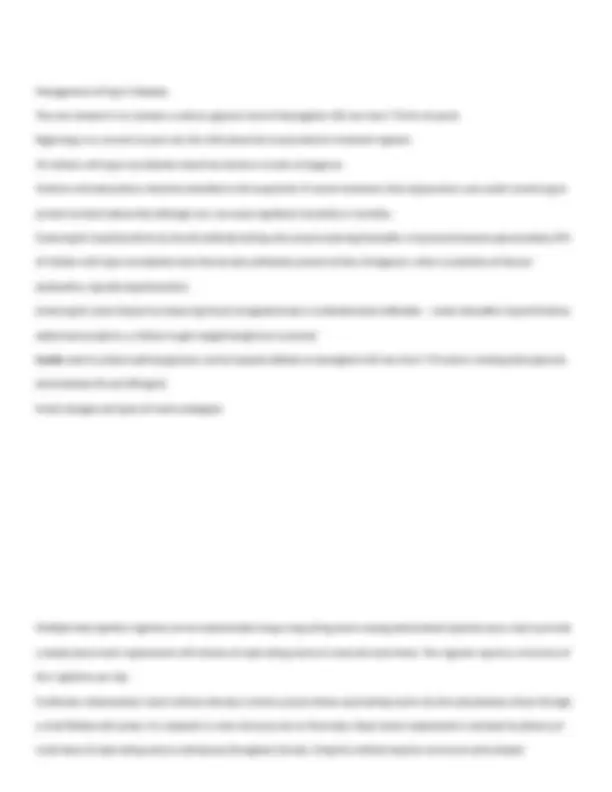


Study with the several resources on Docsity

Earn points by helping other students or get them with a premium plan


Prepare for your exams
Study with the several resources on Docsity

Earn points to download
Earn points by helping other students or get them with a premium plan
Community
Ask the community for help and clear up your study doubts
Discover the best universities in your country according to Docsity users
Free resources
Download our free guides on studying techniques, anxiety management strategies, and thesis advice from Docsity tutors
A comprehensive overview of common pediatric health conditions, including gastroenteritis, functional gastrointestinal disorders, foreign body ingestion, enuresis, and endocrine and metabolic disorders. It covers various aspects of diagnosis, treatment, and management for each condition, offering valuable insights for healthcare professionals and parents alike. The document also highlights key considerations for different age groups and emphasizes the importance of early intervention and preventative measures.
Typology: Study notes
1 / 17

This page cannot be seen from the preview
Don't miss anything!










Week 5 GASTROINTESTINAL DISORDERS When assessing a suspected GI problem, head to toe physical assessment is indicated. Body mass index is one of the first indicators to use to assess body fat and is common method of tracking weight problems and obesity in children two years old and older. Assessing for peritoneal irritation you can have the patient stand on tip toes and fall into the heels or jump. Palpate for rebound tenderness and positive Rovsing sign which is by palpating in the left iliac fossa which produces pain in the right iliac fossa. Check for the Obturator sign by placing the patient in a supine position and then the patient flexes the right thigh at the hip with the knee being internally rotates the hip. It is positive when it induces abdominal pain. Posas sign: the patient will lie on the left side and extend and then flakes the right leg at the hip. It is a positive sign if it induces abdominal pain. Performing a rectal examination when intra-abdominal, pelvic, or peri-rectal disease is suspected. In the newborn examination you should routinely assess for anal stenosis. Infants and young children to do a rectal exam you use the fifth finger. Use of Probioti cs Some of the most common uses of probiotics in the treatment of digestive disease include IBS which is a recurrent disorder of GI functioning that involves a small and large intestine with disturbances of intestinal/bowel motor function and sensation. Infectious diarrhea which can be caused by viruses, bacteria, and parasites. Rehydration is key element in the treatment of diarrhea. Group A rotavirus as the primary cause of disease in children the use of probiotics and prebiotics has been related to shorter duration and severity of rotavirus diarrhea to the prevention of infection and reduce incidence of reinfections. Antibiotic associated diarrhea is defined as a unexplained diarrhea from other causes occurring in association with antibiotic therapy. It results when the number of healthy microorganisms in the gut decreases because of antibiotics given to treat infections. It occurs most frequently with the use of cephalosporins, penicillin, fluoroquinolones, and Clindamycin. C-diff is the most serious bacteria found in AAD and probiotics may be helpful in preventing AAD. Colic is defined as crying for no apparent reason that lasts for three hours or more per day and occurs 3 days or more per week in an otherwise healthy infant younger than three months of age.
Upper gastrointesti nal tract disorders Dysphasia or difficulty swallowing may be caused by a variety of disorders. It may occur because of a structural deficit including esophageal narrowing or extrinsic obstruction. Prematurity and neurologic impairment from disorders can be causes of dysphasia. Mucosal injury most commonly occurs from GERD, eosinophilic esophagitis (EoE) or gastritis but can also be due to caustic ingestion or medication. Diagnostic test may include barium swallow which is usually the initial procedure because it is especially effective in detecting esophageal narrowing. Manometry is the gold standard for diagnosing motor disorders. MRI is used for structural abnormalities. Difficulty with swallowing requires evaluating associated cognitive, sensory motor, developmental, and behavioral issues. Vomiti ng The forceful emptying of gastric contents coordinated by the medullary vomiting center and or the chemoreceptor trigger zone of the brain. For a newborn or young infant infectious processes, congenital GI abnormality, CNS abnormality, or inborn errors of metabolism are the causes. In infants and young children gastroenteritis, GERD, milk and soy protein allergies, pyloric stenosis, obstructive lesion, inborn errors of metabolism, intussusception, child abuse or intracranial mass can be causative factors. In older children and adolescence – gastroenteritis, systemic illness, CNS (abdominal migraine, meningitis, or brain tumor), intussusception, rumination, superior mesenteric artery syndrome, and pregnancy are causative factors. Non-bilious vomit is generally caused by infection, inflammation, metabolic, neurologic or physiological problems. An obstructive lesion generally causes bilious vomiting. Dehydration is the loss of water and extracellular fluid. Volume depletion or hypovolemia and dehydration are used interchangeably. Dehydration is classified as mild when <3% weight loss when compared with recent and concurrent weight in older children and 5% infants. Moderate is a 6% weight loss in older children and 10% infants. Severe is a 9% or greater in older children and 15% or greater in infants.
For children five years old or younger - cyproheptadine (first choice) 0.25-0.5 mg/kg/day divided BID or TID. For children older than five years amitriptyline is the first choice – for doses >1mg/kg/24 hr monitor EKG before starting and 10 days after peak dose. Propranolol is the second choice – taper when discontinuing and monitor resting HR. For acute phase interventions supportive measures include early intervention within two to four hours of onset of symptoms and they include dark quiet environment and replacement of fluids, electrolytes, and calories. If anxiety is a trigger relaxation exercises may be helpful. Sedatives for unrelenting nausea and vomiting to induce sleep such as lorazepam with Zofran is considered most effective. Referral is recommended if red flag symptoms occur or if the child fails to respond to appropriate acute treatment or prophylaxis Abdominal Migraine It is thought to be part of a continuum with migraine and CVS. It typically occurs in children rather than adults and the diagnosis is often difficult to determine during the first episode but becomes evident with cyclic episodes. The symptom based diagnostic criteria for child and adolescent functional gastrointestinal disorders are called the Rome 5 criteria. The criteria for the diagnosis of an abdominal migraine must include all the following occurring at least twice and for at least six months prior to diagnosis: Paroxysmal episodes of intense acute periumbilical midline or diffuse abdominal pain lasting one hour or more this should be the most severe and distressing symptom. Episodes are separated by weeks to months. In intervening periods of usual health lasting weeks to months. Common stereotypical pattern and symptoms in the individual patient. Pain associated with two or more of the following: nausea, vomiting, anorexia, headache, photophobia, or pallor. After appropriate evaluation the symptoms cannot be explained by another medical condition These criteria need to be present for two or more times in the preceding 12 months. Clinical findings include a family history of migraine or motion sickness personal history and motion sickness episodes that last hours to days with a one hour minimum. Aura not frequently experienced, headache complaints typically absent or minimal, and may have symptoms of fatigue and drowsiness. Normal physical examination, normal growth curves and BMI
Identify and avoid triggers such as caffeine, nitrates, excessive emotional stress, travel, prolonged fasting, ultra-sleek flickering or glaring lights. Sleep often relieves symptoms and antiemetics may abort an attack. Abdominal migraines should respond to migraine prophylactic therapy and a positive response helps confirm diagnosis. Gastroesophageal Refl ux Disease Refers to the passes of gastric contents into the esophagus from the stomach through the LES. Symptoms and signs that vary by age: Infancy you'll see regurgitation: signs of esophagitis which include irritability, arching, choking, gagging, and feeding aversion. Usually, symptoms resolve between 12 and 24 months of age. Also, obstructive apnea, stridor, lower airway disease by which reflux complicates a primary airway disease, otitis media, sinusitis, lymphoid hyperplasia, hoarseness, vocal cord nodules, laryngeal edema. Child and adolescence: regurgitation during preschool years, complaints of abdominal and chest pain, neck, contractions such as arching and turning of head, asthma, sinusitis, and laryngitis. In the physical exam you need to review height, weight, and head circumference. Signs of failure to thrive, torticollis such as neck arching, hoarseness, anemia, tooth erosion, and a facial rash, recurrent diarrhea, persistent vomiting, or early morning vomiting. Empiric trial of acid suppression with a PPI for four weeks may be used as a diagnostic test in older children and adolescents but is not recommended in infants and young children. Esophageal pH monitoring has been the gold standard to diagnose reflux. The presence of reflux may not correlate with the severity of illness and some gastric contents may not be acidic. Multichannel intraluminal impedance measures episodes of reflux independent of the pH of the fluid and it is used full for making a diagnosis in children with respiratory events related to reflux. For management pharmacologic acid suppression agents are the mainstays of treatment. These pharmacologic agents include H receptor agonists, PPI's, and buffering agents. Histamine 2 receptor agonists suppress gastric acid secretion by competitively inhibiting histamine at the parietal cells H2 receptor. PPI’s are the most potent acid suppressants and they work by blocking the final step in acid secretion. They provide faster and increased relief of symptoms. Thickened feedings have long been a recommendation for GERD. An increase in caloric density may be necessary in infants with FFT. In infants, supine positioning during sleep is recommended. Positioning infants upright my worsen reflex. Elevation of the head of the bed can be done.
Classified as primary or secondary. Most primary ulcers are duodenal and have no underlying cause and intend to be chronic with resulting granulation tissue and fibrosis. They tend to reoccur a more common in adolescence and rare in children. Secondary ulcers are more often gastric, more acute and associated with known ulcerogenic events. Head trauma, severe burns, use of corticosteroids, and non-steroidal anti-inflammatory drugs are associated with secondary ulcers. Aspirin or NSAIDS cause mucosal injury by direct injury or inhibiting cyclooxygenase and prostaglandin formation. Stress ulceration usually occurs within 24 hours of critical illness it may occur in 25% of critically ill children in intensive care units. A strong familial predisposition for PUD is noted and most children with duodenal ulcers have a positive family medical history which is a key finding. Protective factors include the water-insoluble mucus gel lining, local production of bicarbonate, regulation of gastric acid and adequate mucosal blood flow. Aggressive factors include the acid-pepsin environment, infection with H pylori and mucosal ischemia. The most common symptom of PUD is vague dull abdominal pain however presenting symptoms vary depending on the age of the child Hematemesis or melena is reported in up to 50% of patients. Neonates can present with gastric perforation. Infants usually present with feeding difficulty, vomiting, crying episodes, hematemesis, or melena. Epigastric pain and nausea are reported more often by school age children and adolescents. The classic adult symptom of PUD, pain alleviated by ingestion of food, is present in only a minority of children. Most children presenting with epigastric or periumbilical pain do not have PUD but rather functional bowel disorder, IBS, or functional dyspepsia. GI tract bleeding may be a presenting symptom and can lead to iron deficiency anemia with symptoms of fatigue, headache, and malaise. Endoscopy with mucosal biopsy is a diagnostic test of choice and validates H pylori infection. Endoscopy is the procedure of choice because it allows direct visualization of mucosa, localization of the source of bleeding, and collection of biopsy specimens. Studies to detect H pylori include a culture of biopsy via endoscopy is the gold standard. A C-urea breath test is a non-invasive diagnostic test of choice As for the management the goals of treatment include ulcer healing, elimination of the primary cause, relief of symptoms, and prevention of complications. H2 receptor agonists or PPI's are first line therapy. PPIs are most effective if given before a meal.
Foreign body ingesti on Coins and small toy objects are the most ingested items. Most ingestions of foreign bodies occur in children between six months and three years of age. Esophageal foreign bodies common symptoms include an initial episode of choking, gagging, and coughing. Excessive salivation, dysphasia, food refusal, hematemesis or pain in the neck, throat, or sternal notch areas may follow respiratory symptoms such as stridor, wheezing, cyanosis, or dysphonia may occur if the esophageal body impinges on the larynx or the tracheal wall. Abdominal foreign bodies can be characterized by abdominal distinction or pain, vomiting, hematochezia, and unexplained fever are symptoms related to ingestions loading in the stomach or intestinal areas. Items that pose a greater risk include multiple small magnets that may cling together across the bowel wall, items containing lead and batteries. Children sometimes put items into their rectums and will pass spontaneously but larger sharp objects could be retraced after sedation to relax the anal sphincter. Clinical findings specific physical findings are unusual abrasion, streaks of blood or edema of the hypopharynx may indicate a foreign body. Objects in the esophagus should generally be considered impacted, removal is mandatory except for blunt objects that have been in place less than 24 hours. Endoscopy is the method of choice for removal except that experienced gastroenterology practitioners may use the Foley catheter to pull the object up or a boujee method to push the object into the stomach. Only experienced clinicians working with healthy children who ingested item in less than 24 hours previously should try these methods. For stomach and lower gastrointestinal tract foreign bodies most can be left to pass through the system usually within two to three days. Very sharp items may perforate the bowel and should be removed endoscopically from the stomach. Button batteries in the stomach or intestines might be left to pass but should be removed if the family has not identified the battery in the stool after two to three days. Retained foreign bodies may cause erosion, abrasion, local scarring, obstruction, abscess. FTT, perforation, or other respiratory diseases complications from the removal process can occur traumatic epiglottis can occur from trauma during swallowing or if fingers sweep trying to dislodge the item. Appendiciti s Inflammation of the appendix that leads to distinction and ischemia that can result in necrosis, perforation, and peritonitis or abscess formation.
Observe the infant when quiet between spasms the abdomen is often dissented and tender to palpitation. Ultrasound is the diagnostic test to choose for its high sensitivity and specificity. The ultrasound can show the target sign and the pseudo kidney sign and can be used to evaluate resolution following air contrast enema. An air contrast enema is about diagnostic and a treatment modality. Emergency Management and consultation with the pediatric radiologist and pediatric surgeon is recommended. Rehydration is stabilization of fluid status and gastric decompression. Radiologic reduction using a therapeutic air contrast enema under fluoroscopy is the gold standard. Antibiotics are often administered to cover potential interstitial perforation. A period of observation following radiologic reduction is recommended for 12 to 18 hours in a close phone follow up for up to 72 hours is pertinent. Hirschsprung's Disease – Congenital Aganglionic Megacolon This is an absence of ganglion cells in the bowel wall most often in the rectosigmoid region which results in a portion of the colon having no motility causing functional obstruction. It is the most common cause of neonatal obstruction of the colon. The disease is familial and affects males 4 times more commonly than females. There is an increased risk of those patients with Down Syndrome and several other genetic disorders. Clinical findings include failure to pass meconium within the first 48 hours of life, poor feeding, chronic constipation, vomiting, abdominal obstruction, diarrhea, explosive bowel movements or flatus. A barium enema unprepped contrast study is a diagnostic study as well as an anorectal manometry study. Abdominal X-ray that will indicate dilated loops of bowel the diagnosis of HD is established by rectal suction biopsy, and this will determine the absence of ganglion cells. Management is surgical resection of the effective bowel with or without a colostomy. Failure To Thrive Also known as a FTT is a broad term referring to a symptom of a lack of weight gain proportional to age as determined by a standardized growth charts criterion. Define failure to thrive are as follows: Weight less than 80% of median weight for length
Weight for length less than 80% of ideal weight. Weight for length less than tenth percentile body mass index for chronologic age less than fifth percentile Weight for chronologic age and sex less than fifth percentile or more than two standard deviations below the mean a length for chronologic age and sex less than fifth percentile white deceleration crossing more than two major percentile lines on Asian population Appropriate growth chart and head circumference and developmental skills may be affected FTT has three basic causes: inadequate caloric intake, inadequate caloric absorption, and excessive caloric expenditure. The most common cause is nutritional deficiency without an underlying medical condition. Onset between 2 weeks and four months is more often associated with congenital disorders, serious somatic illness, and with deviant mother infant interactions. Onset between four and eight months and otherwise healthy children is more clearly associated with feeding problems. Clinical findings include poor weight gain associated with poor intake, vomiting, food refusal, food fixation, abnormal feeding practices, presence of anticipatory, gagging, irritability, chronic physical problems in any body system or physiological problems. The presence of vivacity food restriction and or feeding rituals and poor appetite were more predictive of non-organic or inadequate caloric intake and that vomiting, diarrhea, irregular bowel movements, and abdominal distension were more typical symptoms of organic or malabsorption and excessive expenditure of calories. Management is often based addressed by an interdisciplinary team that includes Pediatrics, nutrition, mental health, and other community resources. Social work personnel provide nutritional rehabilitation such as vitamin supplementation with iron, zinc, and minerals. Calorically enriched formula and foods they need to eat up to 150 calories/kg/day for infants <6mo old. The expected normal weight gain by age should be: Birth to 3mo old 25-30 g/day 3-6 mo old 15-20g/day 6-12 mo old 10-15g/day 12 mo old and older 5-10g/day
The voluntary or involuntary urination at an age when toilet training should be complete. Primary enuresis is when children have never established control.
Pyelonephritis is the most severe type of UTI involving the renal parenchyma or kidneys and must be readily identified and treated because of the potential irreversible renal damage. Fever, irritability and vomiting in an infant. Urinary symptoms associated with a fever, bacteriuria, vomiting and renal tenderness in older children. Complicated UTI is defined as a UTI with fever, toxicity, and dehydration, or a UTI occurring in a child that is 3-6 months old. Clinical findings and history: Cath and urinalysis/culture must be obtained prior to starting antibiotics. Older children should be able to obtain a clean catch urine. UTIs cause cultures with greater than 100,000 colonies of a single pathogen in a clean catch urine specimen, greater than 50,000 in a catheterized or suprapubic specimen, or 10,000 colonies of a single pathogen in the symptomatic. UA suspicious findings include foul odor, cloudiness, nitrates, leukocytes, alkaline pH, proteinuria, hematuria, pyuria, and bacteriuria. If a child is younger than 1 year, appears ill, or suspected pyelonephritis - a CBC, ESR, CRP, BUN and creatinine should be done. Infants 2-24 months old with UTI management/treatment: Child should have both a UA suggesting leukocytes and nitrates, and urine culture from a sterile catheterization or suprapubic aspiration with at least 50,000 cfu/ml. If no leukocytes on UA, no treatment is indicated. Uncomplicated cystitis : Short term 3-5 day antibiotics may be as effective in treating non-febrile bladder infections as standard 7-10 day dosing with no increased risk of recurrence. Children 2-24 months and febrile children should have 7-14 days of antibiotics. Recommended medications: Trimethropium-sulfamethoxazole – more than 2 months old 8-12mg/kg in two divided doses. Adolescents 160mg q12hr Amoxicillin – younger than 3 months old 20-30mg/kg/day in two divided doses q12hr. Older than 3 months 25-50mg/kg/day in two divided doses. Adolescents 250-500mg every 8 hours or 875mg q12hr. Amox-clav – younger than 3 months old 0mg/kg/day in two divided doses q12hr. Older than 3 months 20-45mg/kg/day in two divided doses. Adolescents 250-500mg every 8 hours or 875mg q12hr. Cephalexin – 50-100 mg/kg/day divided to 4 doses and given q6hr
Cefixime – older than 6 months old 16mg/kg/day divided q12hr for the first day, then 8mg/kg/day q12hr to complete a 13 day treatment. Adolescents 400mg q12-24 hours Nitrofurantoin – older than 1 month old 5-7mg/kg/day divided q6hr. Adolescents 50-100mg/dose q6hr or 100mg twice a day. Children younger than 2 with their first UTI should have a renal and bladder u/s. All children with fever, pyelonephritis, or with recurrent UTI should have a renal and bladder u/s.
Diabetes is one of the most common chronic diseases in childhood. It is a group of conditions characterized by inadequate insulin secretion, insulin resistance, or both. Type 1 diabetes is caused by autoimmune destruction of pancreatic beta cells in the islets of Langerhans thought to be triggered by a preceding environmental event in genetically susceptible individuals. The destruction of beta cells results in an absolute deficiency in insulin secretion, reduced biologic effectiveness, or both. Although the onset of type one diabetes is gradual with destruction of pancreatic islet cells over time, children may become ill quite suddenly once symptoms manifest. The symptomatology reflects the decreasing degree of beta cell mass, increasing insulinopinia and hyperglycemia, and increase in ketoacids. With type one diabetes, the child may have had a viral infection, cold, or flu. parents may notice increase urination and thirst during the recovery period, with additional signs and symptoms appearing over a period of days or weeks. The following early symptoms are often reported such as polydipsia, polyphagia, polyuria, nocturia, blurred vision, weight loss or poor weight gain, fatigue, and lethargy, vaginal moniliasis. As ketoacids accumulate, the following history is reported: abdominal pain, nausea and or vomiting, fruity smelling breath, weakness that would be caused by dehydration, mental confusion, and coma. Urine testing and blood glucose measurements are generally sufficient to make the diagnosis. Screen for the presence of pancreatic autoantibodies - this should be considered to confirm the diagnosis of type one diabetes, particularly in those cases where they may be uncertainty regarding type. The presence of one or more of the following criteria indicates a diagnosis of diabetes:
understanding of diabetes than subcutaneous injections and puts the child at risk for ketosis if the infusion catheter kinks or becomes obstructed or if the pump malfunctions. Frequent monitoring of blood glucose levels is required, and patients are taught to self-monitor before meals, at bedtime, and sometimes in the middle of the night and during symptoms of hypoglycemia or hyperglycemia. Nutrition: Caloric requirements are based on the child's age, body weight, and activity level. Calories are distributed between protein 15%, carbohydrates 55%, and fat which is less than 30% of caloric intake with less than 7% in the form of saturated fats and account for food preferences, including those pertinent to culture. Youth with diabetes should follow the same physical activity guidelines as all children such as striving for 60 minutes of physical activity daily. If a level of insulin is too low, exercise can trigger release of high levels of glucose and ketone bodies, leading to hyperglycemia and eventually, if unchecked, to DKA. Alternatively, if too much exogenous insulin is administered, the feedback loop for increased glucose mobilization is interrupted and hypoglycemia results. Children with type one diabetes should be seen every three to four months, with the visit tailored by age and developmental stage and careful attention paid to diabetes management. For children two years and older with a family history of hopper cholesterol anemia or early cardiovascular event, a fasting lipid profile should be obtained shortly after diabetes diagnosis when glycemic control has been established. For those children with a negative family history, the first lipid screening should begin at 10 years old. if lipid levels are abnormal, guidelines should be implemented with annual or more frequent monitoring as indicated. if low density lipoprotein cholesterol values are less than 100, lipid profiles may be repeated every three to five years. if therapy is indicated, the treatment goal is an LDL cholesterol value less than 100. Recommended screening parameters: Type 2 Diabetes Children usually are diagnosed during the teenage years, between 10 and 19 years old.
Type 2 diabetes begins with increased tissue resistance to insulin, resulting in hyperinsulinemia and hyperglycemia. Although pancreatic beta cells initially produce insulin, hyperglycemia creates an increased insulin demand and with an increasing demand for insulin over time, the pancreas loses its ability to effectively secrete insulin. Children born to a mother with just stational diabetes, who are small for gestational age at birth and those who are overweight or obese and those who have a family history of type 2 diabetes are at increased risk. For those who are at an increased risk they need to be screened every three years using a fasting plasma glucose test. the history of patients with type 2 diabetes may present with polydipsia, polyphagia, and polyuria. nocturia or bed wetting, blurred vision, obesity especially central, report of hyperpigmented velvet like rash in skin folds, frequent or slow healing infections, fatigue and symptoms of sleep apnea, history of premature adrenarche. The following findings may be present on physical examination such as dehydration, BMI greater than the 85th percentile, weight loss is less common, vaginal yeast, thrush, or other infection, polycystic ovary syndrome symptoms such as acne, hirsutism, and hypertension. Diagnostic test can include urine for glucose and albumin and a fasting blood sample for blood glucose, A1C, lipid panel, TSH and free T4, and insulin level. Diagnostic criteria are the same as type one diabetes which is listed above. If diet and exercise do not achieve glycemic control, pharmacologic agents should be added to the treatment regimen. Metformin and insulin are approved for the use of type 2 diabetes in the pediatric population. Most children are started on metformin and doses up to 1000 milligrams twice a day blood glucose needs to be checked only before breakfast and two hours after dinner. Vitamin B12 levels need routinely checked as well as liver function. When a child with type 2 diabetes has ketonuria or is in DKA, insulin therapy is needed initially. If the diagnosis is unclear regarding type 1 versus type 2 diabetes or if the patient's blood glucose is 250 or greater or A1C is greater than 9% insulin therapy should be initiated. After stabilization of blood glucose levels, it may be possible to gradually wean the insulin and begin metformin.